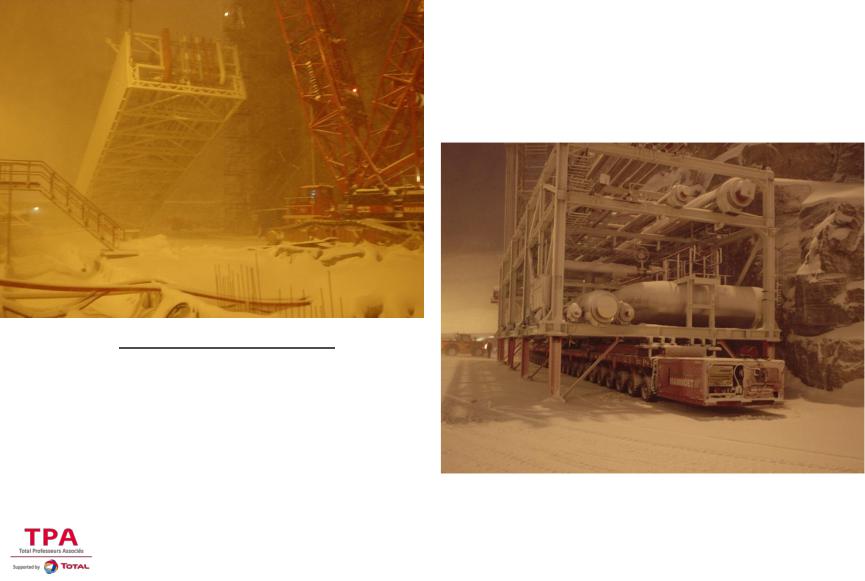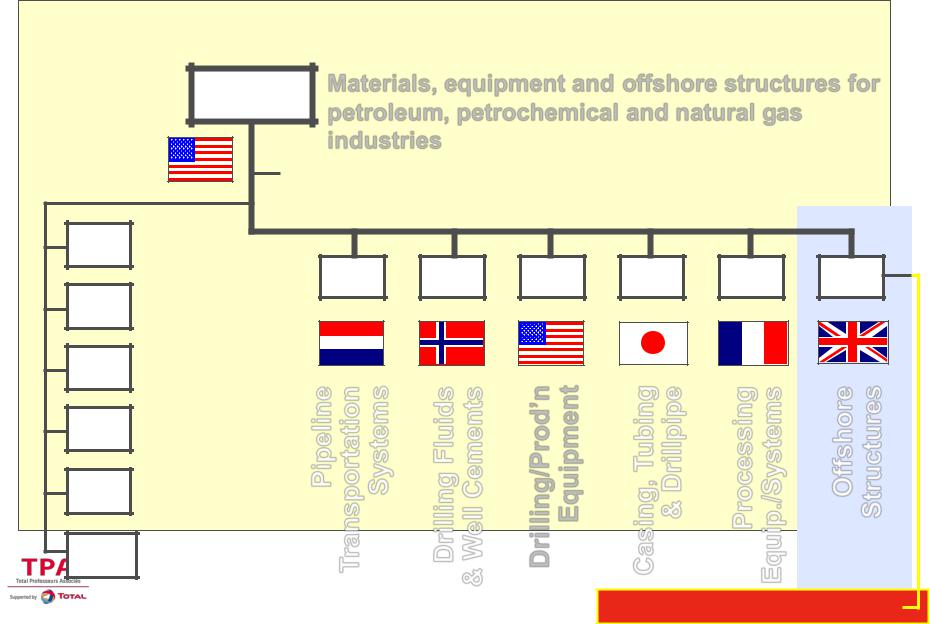
2015 ARKH-P7 Artic P
.pdf
AGENDA
 1 Geography and geopolitic
1 Geography and geopolitic
 2 Existing facilities
2 Existing facilities
 3 Some technical challenges:
3 Some technical challenges:
A Ice and Icebergs
B Winterization
C Arctic Codes
D HSE
 4 Shtokman
4 Shtokman

Definitions
 Winterization refers to the process of preparing something for an upcoming winter.
Winterization refers to the process of preparing something for an upcoming winter.
 Opened module ≠ winterized module ≠ contained module
Opened module ≠ winterized module ≠ contained module
 Protecting against cold, icing, snow, wind, rain:
Protecting against cold, icing, snow, wind, rain:
Personnel
Equipment
Asset
Operations
 Providing optimum conditions to:
Providing optimum conditions to:
HSE performance
Production, flow assurance
Maintenance
Construction / pre-service phases

Overall winterisation strategy
Project / Company must have an overall winterisation strategy / philosophy i.e
Overall protection
Individual equipment protection
Personal Protective Equipment (PPE) – thermal coverall, breathing apparatus, gloves,..
A Winterization philosophy shall be established and adress requirements discipline by discipline (for instance trace heating)
Needs a Leader ("Mr/Mrs Winterisation")
Winterisation is not a single discipline
Classic "transverse working“
Winterisation = design & installation
Simple
Robust / sturdy

Pipelines, flexibles, risers
Pipes :
Coating
Foundations stability
Expansion loops
Heat tracing, insulation
Flexibles :
Non ferrous material behaviour against cold
Ice in annular due to condensation
Reel laying (radius) during cold weather cold
Storage under extreme cold conditions
Risers protection against ice loads
May be exposed to ridge sail & keels
Wear, shocks, ice gouging
Clamps (neoprene)
Local heating in moon pools

Preservice operations in adverse weather
Lifting in snow storm
Trailers move

MATERIAL ISSUES
All cases must be assessed, not only structural components (pressure vessels – restart after shut down in winter).
T°C Amplitude between winter and summer may generate high loads that could be not taken into account in classical design codes.

AGENDA
 1 Geography and geopolitic
1 Geography and geopolitic
 2 Existing facilities
2 Existing facilities
 3 Some technical challenges:
3 Some technical challenges:
A Ice and Icebergs
B Winterization
C Arctic Codes
D HSE
 4 Shtokman
4 Shtokman

ISO 19906 Arctic code for offshore structures

Why an International Standard ?
Race to the Arctic has begun; 25% Yet-To-Find Oil & Gas
Offshore oil and gas E&P operations in ice covered waters are currently underway in nine countries
Currently only four countries have Arctic Codes: Canada, Norway, Russia, United States
wide variation in coverage, methods and age
Contractors working or proposing to work in these areas may not have the necessary experience
Harmonization of current codes, including integration of latest knowledge, will:
Ensure consistent approaches (ice loads, integrity)
Reduce approval times and save design effort

ISO/TC67
ISO/TC67 Materials, equipment and offshore structures for petroleum, petrochemical and natural gas
industries
|
EC = Executive Committee |
EC/MC |
|
|
MC = Management Committee |
|
WG2 AssessmentConformity |
|
|
|
|
|
|
||
|
|
SC 2 |
SC 3 |
SC 4 |
SC 5 |
SC 6 |
SC 7 |
|
WG4 |
Data |
|
|
|
|
|
|
|
|
Collection |
|
|
|
|
|
|
|
WG5 |
Aluminium |
|
|
|
|
|
|
|
|
Drill Pipe |
Pipeline Transportation Systems |
FluidsDrilling CementsWell& |
Drilling/Prod’n Equipment |
TubingCasing, Drillpipe& |
Processing Equip./Systems |
Offshore Structures |
|
WG7 |
ResistantCorrosion |
|||||||
|
|
|
|
|
|
|||
|
Materials |
|
|
|
|
|
|
|
WG9 |
Life Cycle |
|
|
|
|
|
|
|
|
Costing |
|
|
|
|
|
|
|
WG10LNG systems |
|
|
|
|
|
|
||
|
& equipment |
|
|
|
|
|
|
|
WG8 - Arctic Offshore Structures
